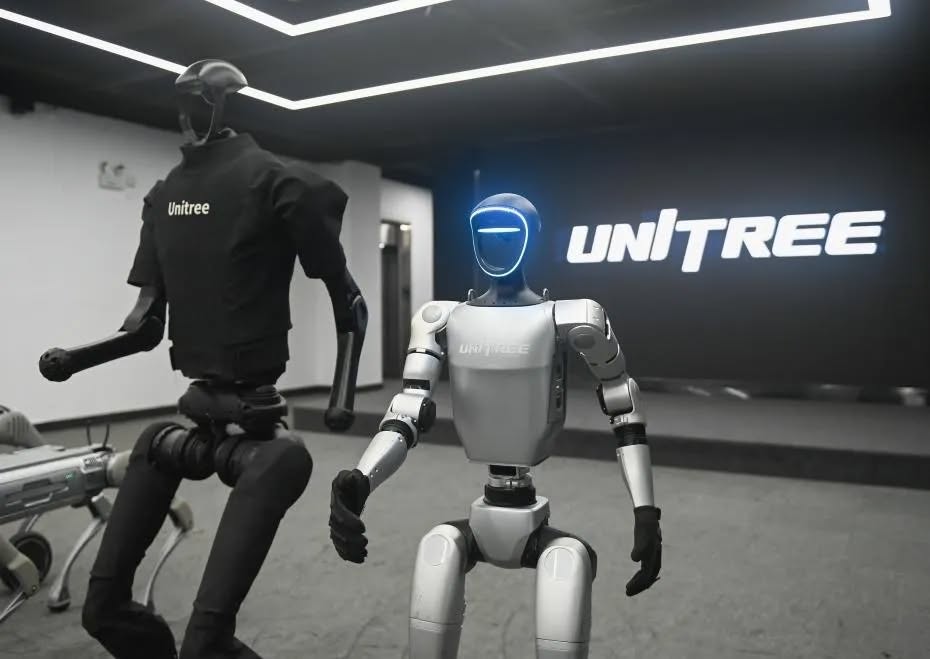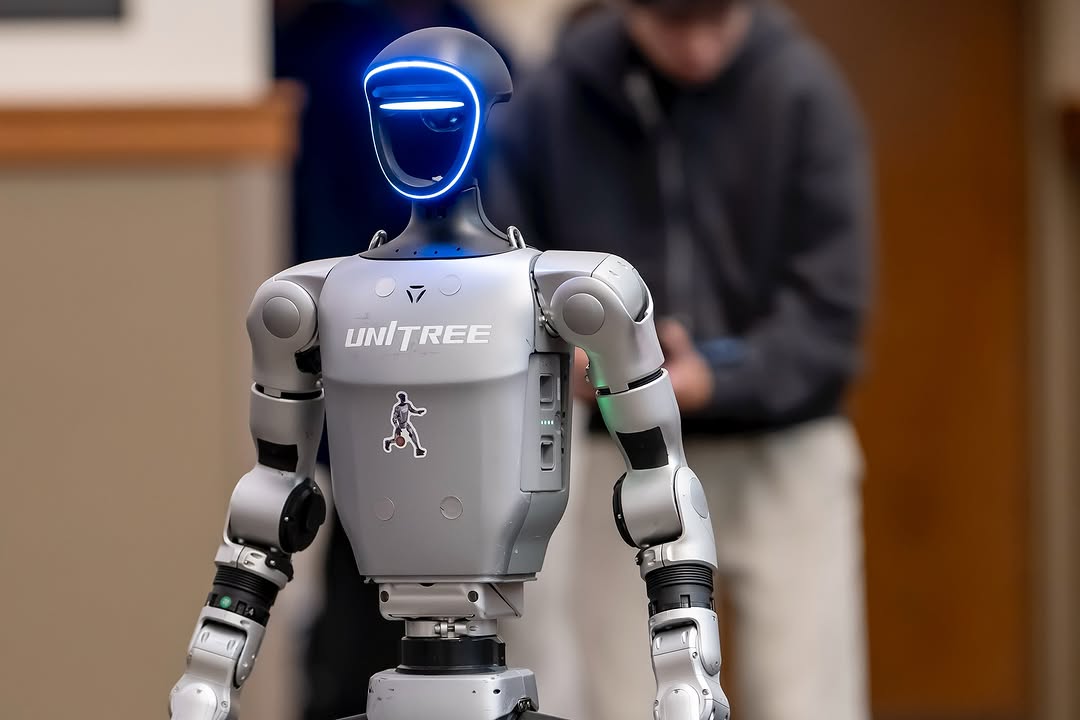Inside the Lab: How Unitree Is Engineering the Future of Accessible Robotic Mobility
The rise of Unitree Robotics has ignited intense interest across the tech, industrial, and even defense sectors, especially following the recent buzz around its formidable Iron-Fist series — muscular, agile machines that made headlines for their astonishing strength and lifelike motion. As explored in our feature on how Unitree’s bots are shaking up the robotics world, this is not a company merely aiming for novelty. It's meticulously engineering a new category of functional, affordable robotics from the ground up, poised to integrate intelligent machines into demanding industries and potentially, even everyday life.
A Founder's Vision Forged in Pragmatism: Robotics for Everyone
At the very core of Unitree’s meteoric rise is Wang Xingxing, a robotics visionary and entrepreneur often described as China’s pragmatic answer to Boston Dynamics’ Marc Raibert. Born in 1990 in Ningbo, Zhejiang, Wang's journey into robotics began not in a well-funded lab, but with a deeply hands-on, budget-conscious approach. As a fresh engineering student at Zhejiang Sci-Tech University, he famously built his first small bipedal robot for just around ¥200 (approximately US$30), utilizing basic tools like a hand saw and scavenged components. This early struggle with limited resources profoundly shaped his philosophy: that high-performance robotics could be affordable and accessible.
Wang's early prototypes, with their surprisingly playful and organic movements, quickly gained recognition online, signaling a fresh perspective in the field. Despite facing academic hurdles with English, he excelled in science and engineering, diving into over 100 STEM books and developing a profound fascination with AI. After a brief stint at DJI, the drone giant, the viral success of his quadruped prototype, "XDog," and initial angel funding of ¥2 million prompted him to found Unitree Robotics in 2016. His audacious vision remains: robotic mobility should be as common and impactful as smartphones. This drives Unitree’s mission to create intelligent, affordable robots that can serve both commercial and, eventually, personal use cases — a vast market niche previously overlooked by major players focused exclusively on high-cost enterprise or military contracts.
The Unitree Edge: Affordable Innovation Through Deep Engineering
Where many robotics firms chase bleeding-edge performance without significant cost constraints, Unitree takes a distinct route. They combine precision engineering with highly scalable, efficient manufacturing processes primarily within China. This is underpinned by Unitree's fully self-researched core components, including proprietary high-performance motors (like the GO-M8010-6, known for its high torque and integrated FOC control algorithms), custom reducers, and advanced, real-time control algorithms. This integrated approach allows them to achieve remarkable capabilities at a fraction of the cost of competitors.
Their diverse range of robots, including the versatile Go1 and Go2 quadruped series, the robust B1 and B2, and the agile humanoid H1 and G1, have already demonstrated surprising versatility across various real-world applications:
- Warehouse logistics & Smart Factories: Automating tasks like inventory management, material transport, and even mobile manipulation in facilities, seen in operations at companies like Amazon or advanced automotive manufacturing plants.
- Search-and-rescue & Public Safety: Navigating challenging terrain and providing situational awareness to assist first responders in disaster zones or dangerous environments.
- Industrial Inspection: Performing detailed inspections in hazardous or hard-to-reach industrial settings, offering enhanced safety and efficiency for sectors like energy and infrastructure.
More recent releases, particularly the Iron-Fist bots (like the G1 Humanoid), signal the company’s intent to expand into even more rugged, high-intensity environments. These muscular machines, capable of withstanding significant force and traversing difficult terrain with unprecedented agility, are already being evaluated for critical roles in specialized defense training and advanced industrial tasks where human access is limited or dangerous.

Building a Robotic Ecosystem: The "Android" of Robotics?
Unitree isn't merely manufacturing individual machines; it’s meticulously laying the groundwork for a complete, interconnected robotic ecosystem. The company has invested heavily in its software stack, which includes advanced AI-powered navigation, real-time obstacle avoidance, and sophisticated collaborative behavior among multiple robots.
A key differentiator is their commitment to openness and user empowerment. They’ve launched comprehensive developer kits (SDKs) like unitree_legged_sdk and unitree_sdk2, supporting languages like C++ and Python. These SDKs provide both low-level joint control and high-level motion interfaces, facilitating everything from intricate research to practical application development. Unitree also provides robust documentation, detailed simulation environments (like unitree_mujoco and unitree_rl_gym), and actively fosters a growing community. They are courting global universities and research institutions to adopt Unitree bots as flexible, modular platforms for R&D, with available mounting kits (e.g., Picatinny rails for Go2) allowing easy attachment of third-party sensors, cameras, and tools. Furthermore, their robots support Over-The-Air (OTA) updates for continuous improvement and new features, and some models feature cloud integration capabilities for remote management and data analytics, reflecting a modern IoT approach to robotics.
This strategy aims to establish a "robot OS" – a shared, evolving platform where hardware and software innovations can flourish simultaneously, much like the Android ecosystem did for mobile devices. While their current trajectory remains focused on commercial markets where enhanced mobility offers a tangible productivity edge, Wang has hinted that Unitree could eventually enter the consumer lifestyle market. Imagine bots designed for eldercare assistance, home security patrols, or even personalized fitness coaching—a vision some companies, like Amazon with Astro or various startups in elder-tech, are already exploring.
Related: "The Robot Decade”: Nvidia CEO Declares AI-Driven Machines Will Rule the 2020s
Related: Tesla Sues Former Engineer for Stealing Robotic Trade Secrets
Global Ambition and Navigating Ethical Frontiers
Headquartered in Hangzhou, China, Unitree has rapidly scaled its global footprint, establishing strong distribution networks in North America, Europe, and Southeast Asia. While the company remains privately owned, and details of its financial backing are closely held, analysts believe Unitree is attracting significant interest from both institutional investors and government partners keenly interested in advanced autonomous mobility solutions.
Naturally, there’s growing scrutiny around how companies like Unitree balance rapid innovation with critical ethical considerations, particularly as their robots gain capabilities once exclusively reserved for military systems. Concerns include the potential for autonomy in sensitive applications (e.g., security), the privacy implications of pervasive sensing from onboard cameras and LiDAR, and the broader societal impact of job displacement in certain sectors. Beyond these, the challenge of "authenticity" in robot deployment is paramount: are these robots genuinely solving problems, or merely being showcased as flashy tech?
Wang and his team have publicly emphasized a strong commitment to human-centered utility and responsible innovation. They actively seek to develop robots as tools that augment human capabilities, enhance safety in dangerous jobs, and assist, rather than directly replace, human workers. Unitree addresses data privacy through transparent policies and prioritizes human oversight in sensitive roles. While the line between defense and civilian deployment continues to blur in the broader robotics industry (e.g., Boston Dynamics' Spot has also seen military testing), Unitree has consistently stated its focus on civilian and humanitarian applications. They engage with public dialogue to ensure their technology is developed and deployed responsibly, emphasizing transparent data practices and human oversight in sensitive roles. This progressive stance contrasts with some legacy industries or smaller enterprises that, due to high initial cost, lack of specialized expertise, or deeply entrenched infrastructure, have been slower to adopt advanced robotics into their operations.
Conclusion
Unitree Robotics is not simply building advanced machines; it's profoundly reimagining how intelligent systems will move through and interact with our world. By strategically prioritizing affordability born from founder-driven pragmatism, engineering excellence rooted in proprietary components, and the cultivation of a vibrant, user-driven ecosystem, the company is leading a new wave in robotics—one that seamlessly blends practical utility with visionary ambition.
With Wang Xingxing at the helm, Unitree is quietly but confidently positioning itself to become a defining player in the future of mobility. They are not just creating advanced tools; they are building the accessible, intelligent platforms that will power the next generation of industrial efficiency, public safety, and potentially, even personal assistance. The era of widespread robotic mobility is no longer a distant dream—Unitree is engineering its tangible reality, one agile step, and now one iron fist, at a time.
Related: Robots Race Humans in Historic Beijing Half-Marathon
Related: The Rise of Military Robotics: Navigating the Autonomous Battlefield














